|
Shonari Richardson with the painting of his cousin Winston Duke. Shonari Richardson is an artist from Tobago.
The 22-year-old has been painting since the age of two. But only recent has he become a sensation in his hometown of Spring Garden. How did he do it? It does help if your cousins are Tobago-born Black Panther actor, Winston Duke, and Watson Duke, the politican and PSA president. Winston Duke, who plays the character, M'Baku in the Marvel movie is described as an antagonist, itching to take the crown from his archnemesis, Wakanda King T'Challa played by American actor, Chadwick Boseman. Richardson, who did the portrait of his cousin last week Thursday, said it took just about a day and half to complete it. He utilized acrylic paints to complete his masterpiece, which measures 22 inches in width and 30 inches in length. Proud of his cousin's accomplishments, Richardson said, he could not find any fault in Duke's depiction of the character, M'Baku, and acknowledged the immense talent and scope of the movie directed by American film director and screenwriter, Ryan Coogler. Before the hype and fanfare of the Black Panther movie, many Trinidadians and Tobagonians had no idea who was Duke. Not to be confused by minority Tobago House of Assembly leader Watson Duke, who acknowledged recently, he and the Black Panther star are cousins. Richardson, who shares a close relationship with the Hollywood actor, posted this comment along with the painting: I never got the drive to paint a painting like how I did this one and in record time too maybe because we're related or because he's Tobagonian and this most epic movie out right now. Anyways I've just painted Marvels movie Black Panther's M'Baku played movie star and Tobagonian Winston Duke…big up yourself cuzzo. So excited to see this movie eh. He said Duke is very low-key and makes surprise visits to Tobago to see the family. Though Richardson may not share the same passion for the big screen as his cousin, talent definitely runs in the family. He said, “I have seen the movie but I have no desire to become an actor. I plan to further my studies in Visual Arts at the University of the West Indies in August.” Richardson continues to hone his art and has painted several prominent people in areas of politics and entertainment. From Prime Minister Dr Keith Rowley to former prime ministers, Kamla Persad-Bisessar, Patrick Manning and Dr Eric Williams to name a few. Richardson's post has been shared on social media to rave reviews. It shows Richardson next to the completed portrait of the Black Panther star, Winston Duke. One of the shares came from Duke himself, who posted the portrait and this comment on his Facebook page: Wow! This incredible Fan Art is courtesy of my tremendously talented Cousin and God Brother, Shonar Richardson Art! Friends, what do you think? Let's show him some love! Source: Daily Express, March 2, 2018 The Black Panther movie has grossed $763.3M globally, and according to online US Magazine, Deadline Hollywood given the immense popularity amongst movie-goers, the Marvel sensation looks like it will rake in more than $1 billion.
0 Comments
 Dillian Johnson fears being killed for sexuality and is seeking asylum in the UK after attack. He was shot in the hand on 3 December 2017. Photograph: David Levene for the Guardian Lawyers in Trinidad and Tobago are challenging the conduct of the country’s top judge, following questions about his relationship with a man who was shot in an ambush and is now seeking asylum in the UK.
The Law Association of Trinidad and Tobago is investigating allegations involving the chief justice, Ivor Archie, after local media queried his conduct in relation to Dillian Johnson, 36, who survived a night-time shooting outside his home in December. Johnson fled Trinidad to the UK three weeks after the shooting and says he fears for his life if he is forced to return. Questions have been asked about whether the married judge took Johnson with him to a four-day Commonwealth law conference in Guyana in 2016, and whether he used his office to lobby for state housing for people, including Johnson. It was also alleged that he proposed to his fellow judges that they swap their state-provided personal security officers for others provided by a company that employed Johnson as a consultant. Archie has denied the allegations and has accused the law association of being biased against him. He strongly denies any suggestion he knew about a plot to shoot Johnson, saying such claims were “ridiculous and false”. Archie, 57, is an honorary member of the middle temple bench, one of London’s four inns of court, and is considered a liberal thinker on gay rights. He has denied having an “intimate” relationship with Johnson, a manager for the state water and sewage company who was convicted of forging job references in 2008. Archie’s lawyers declined to say whether he described himself as gay or bisexual as they said it did “not affect the chief justice’s professional conduct and concern[s] his private life”. Johnson was shot outside his home on 3 December and arrived in the UK on 29 December. He says he fears for his life if he returns to his home country and believes he was the victim of a targeted hit. “I fear being murdered for my sexuality if I go back,” Johnson said. “My relationship with [the chief justice] has been highly publicised.” Johnson has complained that police have failed to bring his attacker or attackers to justice. He is being assisted in the UK by the human rights campaigner Peter Tatchell, who said there was “public hostility and great stigma attached to homosexuality” in Trinidad and Tobago. “Buggery” remains punishable by up to 25 years in prison and six gay men were murdered in the first five months of 2017, according to rights campaigners. Last week, a legal challenge was launched to repeal the laws criminalising homosexuality in the Caribbean nation, which has a population of 1.4 million. The UK-based gay rights advocate, Jason Jones, who is leading the case, has said he has received death threats as a result. Growing up gay in the Caribbean, I was in constant survival mode In January, photographs emerged in the local press, apparently showing Archie and Johnson on a hotel bed at a legal conference in Guyana. Another photo showed Johnson wearing what appeared to be Archie’s conference lanyard. Archie has said he did not stay in the same room as Johnson or pay his bills, and that US forensic experts had concluded the photos had been digitally manipulated. Archie’s lawyers said he was “alive to the clear mischief of Mr Johnson” and that two of the photos “contain images which are false representations of the subject matter of the photographs”. Johnson has alleged to police that Archie may have known about the shooting before it happened. Archie’s lawyers said Whatsapp messages which Johnson claims show Archie plotting the attack with another man “were as false as the doctored photographs and should be forensically examined by a reputable source before any responsible person seeks to rely on them for publication”. In December, Archie won backing from a group of supreme court judges who believe he has been the victim of “false narration” in respect of some of the allegations against him. They took out a newspaper advertisement to declare it was they, not Archie, who suggested alternative security arrangements should be explored. “At no time did the honourable chief justice seek then or since to ‘convince’ fellow judges to change existing security arrangements,” they said in a statement signed “group of judges”. However, last week the Trinidad and Tobago Law Association said it had appointed two QCs to take their investigation into Archie forward. They said they had a list of allegations “sufficiently substantiated as to require a response”. Archie responded by saying he would issue a high court claim to halt the investigation. He alleges the law association is “tainted by bias” against him and is exceeding its powers. Before Johnson was shot in Gasparillo, 90 minutes’ drive from the capital, Port of Spain, there was growing media speculation about the nature of the relationship between Archie and Johnson. Johnson believes he had been under surveillance in the preceding days. After the shooting, Johnson made a detailed 13-page crime report to the anti-corruption investigative bureau of the Trinidad and Tobago police, including details about how he claims to have obtained the Whatsapp messages which Archie’s lawyers said were fake. He described how, four days before the shooting, he was followed in his car by an unidentified man to a restaurant car park, where the man photographed his vehicle. The following day a friend introduced him to a man whom he recognised as having followed him 24 hours earlier. Johnson said the man warned him that the political opposition wanted to kill him. Johnson told the police that on the day of the shooting he was outside his home when he was approached by a man asking if there was a mechanical garage nearby. “I saw him move his left hand and pulled up his jersey and with his right hand he pushed it down the waist of his pants. I heard him say ‘Doh make a scene’. I felt fear and immediately turned and started to run. I heard loud noises and knew it was gun fire. “I didn’t know I was hit until I came out of the bushes,” he told the Guardian. “The adrenaline was pumping.” He had been shot once in the hand and went to hospital for treatment. “The police came to me and took reports,” he said. “They did nothing to find the perpetrators.” Asked to comment, the chief of the the anti-corruption investigative bureau, William Nurse, said: “I have no interest in speaking with the press, foreign or local.” Source: Guardian, Feb 28, 2018 The BEETHAM ESTATE and the BEETHAM Highway in Port of Spain were named after Sir Edward Bethan Beetham who was the 16th Governor of Trinidad and Tobago during the period 1955-1960. Sir Beetham was in fact the last of Colonial Governor of Trinidad and Tobago of British Descent ( Source - Aspiring Minds). In second photo Sir Edward Beetham is person on the right of the Police Commisioner.
I grew up in Trinidad and Tobago during a time when everyone treated each other like Family. When you always had to speak properly when you were with your parents or adults but could "leh go" with your friends. If someone got you angry, you would tell them "how yuh mudda make yuh" with a variety of cuss words. If your mom found out, she made you wash your mouth with soap. Blue soap, sunlight or carbolic.
If you can't take "fatigue", don't start. Everyone had a nickname. The Chinese boy was "chin"; the African boy was "blacks"; the Indian boy was "lal", the fat kid was "fat boy", the skinny boy was "bones". We went outside to play; we got dirty. We used to bathe in the rain, sometimes by the standpipe. I am yet to find anything as satisfying as a cup of creole chocolate or hot porridge on a rainy day. We went to the river or springs on a hot day. Our fast food was corned beef and rice; sometimes, even hot rice and butter. We ate breadfruit, dasheen, yam, eddoes, cassava, boil corn, roast corn. From the bakery we ate belly full, currants roll, coconut drops, milk cake, pan bread, bun, butter bread and hops bread. We loved bread and condensed milk or hot bread and butter; sometimes red butter. We sucked paradise plum, brittle, kazer ball, dinner mint. We ate bene balls, tollum, chataigne, sugar cake, tamarind ball, tamarind stew, red mango, mango chow, plum chow. We got dirty and we didn't eat fast food....we ate cooked food. We got ice cream from the ice cream man or if mum was in a good mood and had the money, we had homemade ice cream on Sunday. The best was when barberdeen was in season. When mum made cake, we licked the bowl clean. Cassava pone or bread pudding was a treat. Redifusion had two channels. To this day I remember "Portia faces life." We listened to auntie Kay on a Sunday. In later years, if you had a tv, you saw auntie Hazel on twelve and under, you watched Mastana Bahar and an Indian movie on a Sunday afternoon and watched Scouting for Talent on Tuesdays. Panorama was time to be quiet. We loved snow cone on a hot day, preferably with guava syrup and condensed milk. We climbed trees, picked mangoes, Chennette, pommerac, plum, pommecythere; whatever was in season. We suck and ate cane with our bare teeth. We played Simon Says, Red Rover, Mother May I, 1,2,3 Red Light, Hide & Seek, Jacks, Marbles, Tag, Hopscotch, Cars, Checkers, cricket, moral, rounders, pan cup, football; we raced against each other in the street and even played jockey in the canal with a piece of stick. A tennis ball and a good piece of wood was enough to start a cricket game, and if somebody window break, game done. The only time we stayed indoors was when we were sick or as a punishment. If you were sick, it was not uncommon to get a "bush bath" with some "buccano leaf" and whatever bush mum thought would make you better. Castor oil or sena pods during vacation was the worse. The boys flew kites that we had made ourselves; sometimes we made a mad bull and hope it wasn't so big that it took you flying. We made zwill with flour and grounded glass; put razor blades in your kite tail and when you battle, who lost, saw their kites "hi-yo". The first one to reach the kite is the new owner. We drove carts we had made from wood with old bearings for wheels. An old bike wheel with the spokes removed was a toy. Who never tried to get "laglee" from the breadfruit tree to try to catch a semp? There was no bottled water, we drank from the pipe. We walked to the corner store and rode our bikes (if we had one) for hours without a cellphone. We weren't AFRAID OF ANYTHING. If someone had a fight, that's what it was...a fist fight. Kids didn't have guns when I grew up. The street lights were your curfew. School was mandatory. Police used to take you to your school when they find you on the road during school hours. We watched our mouths around our elders because we knew if you DISRESPECTED any grown up you were gonna get it with whatever was close and get a second one when your parents found out...!!! Source: life in TnT as I knew it 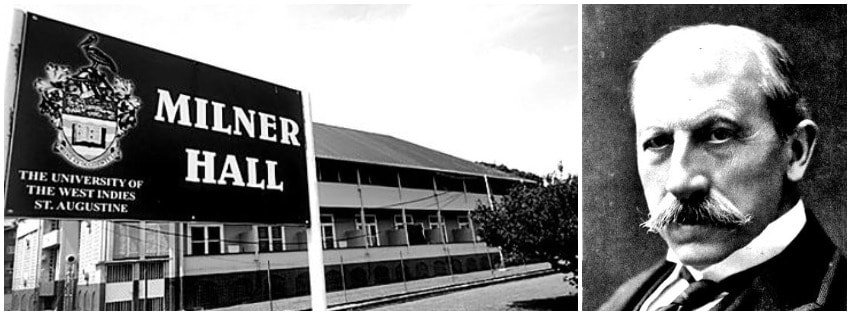 The Hall of Residence at The University of the West Indies (UWI) St. Augustine Campus formerly known as Milner Hall is now Freedom Hall. The process to review the name Milner Hall started in October 2017 having gained approval of the Finance and General Purposes Committee (F&GPC) on the recommendation of a report compiled by Pro Vice-Chancellor Alan Cobley, Professor of South African History, a statement by UWI said. The report confirmed the association of Lord Alfred Milner, whom the Hall was named after, with crimes against humanity in Africa among other actions driven by his self-proclaimed 'British race supremacy' ideology. The name review process included a series of consultations with key stakeholders of The UWI St. Augustine Campus including Hall residents and a wider call to all students, staff and alumni to recommend alternative names. The final decision was made on the recommendation of current residents of Milner Hall. The new name was approved by both the Campus Finance and General Purposes Committee (February 02, 2018) and the University-wide Finance and General Purposes Committee on February 20, 2018. Campus Principal, Professor Brian Copeland expressed his satisfaction with the process. “I am pleased that due process was followed with transparency and that consultation was prioritised. The result is a new name and our new focus will be on helping our students, particularly the residents of Freedom Hall to adjust to the change,” he said. Source: CNC3 The search for the missing grain led to Trinidad and Thomas Jefferson, and now excitement among African-American chefs. Upland red bearded rice, which grows in the Moruga district in Trinidad, turned out to be a missing culinary link between enslaved people in coastal Georgia and a group of slaves who were able to buy their freedom by fighting for the British in the War of 1812. Credit Karsten Moran for The New York Times CHARLESTON, S.C. — Among the biologists, geneticists and historians who use food as a lens to study the African diaspora, rice is a particularly deep rabbit hole. So much remains unknown about how millions of enslaved Africans used it in their kitchens and how it got to those kitchens to begin with. That’s what made the hill rice in Trinidad such a find. The fat, nutty grain, with its West African lineage and tender red hull, was a favored staple for Southern home cooks during much of the 19th century. Unlike Carolina Gold, the versatile rice that until the Civil War was America’s primary rice crop, the hill rice hadn’t made Lowcountry plantation owners rich off the backs of slaves. It didn’t need to be planted in watery fields surrounded by dikes, which meant that those who grew it weren’t dogged by malaria. You could grow it in a garden patch, as did many of the slaves who had been taken from the rice-growing regions of West Africa. This was the rice of their ancestors, sustaining slaves and, later, generations of Southern cooks both black and white. Even Thomas Jefferson was a fan. Some researchers think he is the one who helped spread hill rice throughout the South, giving gifts of the African seed from a 30-gallon cask a ship captain brought him from Africa in 1790. But by World War I, the rice had all but disappeared, a victim both of cheaper imports that were easier to produce and of the Great Migration, in which millions of African-Americans left the rural South. That’s why B.J. Dennis, a Gullah chef from Charleston, was stunned to find the rice growing in a field in Trinidad, tended by a farmer descended from slaves who once lived in Georgia.  In fields dotting the Moruga Hills of southern Trinidad, growers tend rice plants that came from an African strain. It was carried there by slaves from coastal Georgia who had been granted land and freedom in exchange for joining the British military during the War of 1812.CreditCarolina Gold Rice Foundation Mr. Dennis had heard about hill rice — also known as upland red bearded rice or Moruga Hill rice — through the culinary organization Slow Food USA and the Carolina Gold Rice Foundation, the group that brought back Carolina Gold in the early 2000s. He’d also heard stories about it from elderly cooks in his community. Like everyone else, he thought the hill rice of the African diaspora was lost forever. But then, on a rainy morning in the Trinidad hills in December 2016, he walked past coconut trees and towering okra plants to the edge of a field with ripe stalks of rice, each grain covered in a reddish husk and sprouting spiky tufts. “Here I am looking at this rice and I said: ‘Wow. Wait a minute. This is that rice that’s missing,’” he said. It is hard to overstate how shocked the people who study rice were to learn that the long-lost American hill rice was alive and growing in the Caribbean. Horticulturists at the Smithsonian Institution want to grow it, rice geneticists at New York University are testing it and the United States Department of Agriculture is reviewing it. If all goes well, it may become a commercial crop in America, and a menu staple as diners develop a deeper appreciation for African-American food. “It’s the most historically significant African diaspora grain in the Western Hemisphere,” said David S. Shields, a professor at the University of South Carolina and chairman of the Carolina Gold Rice Foundation, who works with Mr. Dennis on historical culinary projects and was with him that rainy day in Trinidad. Mr. Dennis, 38, believes food is the living bearer of history. He has devoted himself to promoting the cooking of the Gullah-Geechee Nation, the descendants of West Africans who lived along the coast from North Carolina to North Florida. Their cooks created the peanut stews, okra-laced purloos and seafood that define Lowcountry cuisine. But how did the rice travel to that field in Trinidad? Dr. Shields has a theory. It begins during the War of 1812, when British soldiers promised land and freedom to a small group of West African slaves along the Eastern Seaboard if they would take up arms against their masters. They did, and each was given 16 acres of undeveloped land in southern Trinidad. They came to be called the Merikins, a Creole rendering of the word American. One group was the Fourth British Marine Company, from the Georgia Sea Islands. The rice, which Dr. Shields believes can be traced to Jefferson’s barrel of seed, was among the crops the group brought with them to Trinidad. The missing piece of the puzzle would have not been found if it hadn’t been for Trinidadian ethnobotanist Francis Morean, a man with Merikin roots who has recorded interviews with most of the 60 or so Merikins still growing hill rice on the island. Mr. Morean had traveled to the American South in September 2015 as part of his exploration of African diaspora cooking. He had heard about Mr. Dennis, but wasn’t able to find him. Then, a few months later, Mr. Dennis reached out to him on Facebook, and the two bonded over their interest in using agriculture to keep their shared heritage alive. Still, no one had made the connection between the rice in Trinidad and the rice that had been lost in the American South. Most students of Gullah-Geechee cuisine thought Carolina Gold was the only rice that enslaved Africans in the coastal South had cooked. Mr. Morean organized a small rice symposium in Trinidad in the winter of 2016, and asked Dr. Shields to present a paper on the island’s hill rice. Also on the guest list were Mr. Dennis and Queen Quet Marquetta L. Goodwine, the elected leader and official spokeswoman of the Gullah-Geechee Nation, who often employs Mr. Dennis to cook for official events. Dr. Shields, who is part of a global effort to find new ways to grow rice on dry land, began his research, and realized that the Trinidad hill rice might be linked to the missing American rice, which in turn could be traced all the way back to the West African rice fields. On that wet morning in Moruga, Trinidad, he had his answer. “When I got out of the car and walked toward the field and saw the rice just about to be harvested, I knew it had to be the real thing,” he said. “It was like you see the story made flesh. You see something that has existed as really an abstract possibility suddenly become real.” Glenn Roberts, the founder of Anson Mills, immediately jumped on board. There is no one as fanatic about Southern heirloom grains as Mr. Roberts, whose South Carolina company led the revival of Carolina Gold rice and several other Southern heirloom grains. Mr. Roberts arranged to have about 80 pounds of the Trinidad rice shipped to the United States. A few pounds made its way to Edouardo Jordan, the Southern chef who opened the restaurant Junebaby in Seattle last year. Mr. Jordan cooked with it and loved it. The rice performs differently in the kitchen than Carolina Gold, which works best in wet or creamy recipes like Hoppin’ John or risotto. Hill rice is better dry, with an okra stew or a sauté or chutney piled on top. Mr. Jordan is so enamored that he is trying to find farmers in the Northwest to grow it, once the seed is approved by the Agriculture Department. “If we can bring this back,” he said, “the historical back story could deepen the development of African diaspora food in America and better tell the real story of Southern food.” At another rice symposium held by the Carolina Rice Foundation in April, Mr. Dennis prepared hill rice for everyone. He cooked it the way he had learned to during his time in Trinidad, simmering it in coconut water until the rice became starchy. Then he covered the rice with chutney made from grinding toasted benne seeds; an herb called shadow benne that is similar to cilantro; some bird’s-eye peppers, and garlic with a little oil. It was delicious. Like many a detective story, this one has some loose ends. Michael Purugganan, a New York University biology professor, was at the Charleston event. He had been part of a team that in 2015 sequenced the genomes of Oryza glaberrima, the African crop now grown by descendants of escaped slaves in the South American country Suriname, and connected it to rice that grew in Ivory Coast. That discovery was concrete evidence of the high level of rice-growing knowledge among African slaves, and marked the first time genetics had been used to pinpoint the origin of a slave crop in the Americas. Could the Trinidadian rice be another example? Dr. Purugganan took the rice to his laboratory in Greenwich Village and sequenced its genes. It turned out not to be indigenous African glaberrima, but more likely a Japonica rice that made its way from Southeast Asia to West Africa between the 16th and 18th centuries. Amy Lawton-Rauh, a Clemson University professor of genetics and biochemistry who is working on the genetics of hill rice, is using population genomics tools to test whether the hill rice has a more complex history. It could even be a hybrid, she said, and not necessarily linked to Jefferson’s rice. So much rice may have been passed around among slave families and descendants that there is no way to be certain where the seed originated, said Christopher Wilson, director of experience design at the Smithsonian’s National Museum of American History. “It might be too much to just give credit to Jefferson,” Mr. Wilson said. “We know about him because we have records. But people miss just how big rice was, and how much money was involved and how much history we have no written record of.” Still, he is as excited as anyone about the hill rice. He has introduced Mr. Roberts to a horticulturist at the Smithsonian to grow and display some of the hill rice. Last summer, Mr. Wilson invited Mr. Roberts to discuss the rice alongside Michael Twitty, a culinary historian and the author of ”The Cooking Gene: A Journey Through African American Culinary History in the Old South” at a Smithsonian event. Mr. Twitty, who first heard about the rice from Mr. Dennis, has embraced it. It fits in nicely with his work, which includes researching the links between Southern food and West African cooking. For the event, Mr. Twitty used it as the base for a chicken stew, made in the style of the Mende people of Sierra Leone, that he cooked with palm oil, onions and garlic. “I don’t really like brown rice at all, but it’s not like that,” he said. His appreciation goes beyond taste: The rice helps validate the African experience in America. “It’s another living artifact that automatically wipes out any nonsense about the earliest years of African-American food,” he said. For now, no one is growing the rice commercially, but Dr. Shields and Mr. Roberts hope it will be embraced by Gullah farmers, and spread from there. In the meantime, they hope to find an economical way to import it from growers in Trinidad. For Mr. Dennis, the chef, a steady supply would ensure that his purloos, like the rice-and-okra dish called Limpin’ Susan (often referred to as the cousin or wife of Hoppin’ John), would have a new dimension. He also hopes that the rice will eventually sell at a price that most cooks can afford, and that African-American home cooks will come to see the hill rice and other traditional dishes as healthier alternatives to a popular perception of soul food. “We’ve been warped into thinking it’s mac-and-cheese and collard greens,” he said. African-American cooking, at least as defined in the Lowcountry, is about slow-cooked peas and vegetables and specific strains of rice, he said. “Culturally, this rice is a hidden story of the African-American and enslaved narrative,” he said. “A lot of our ancestors were not able to read or write, so a lot of stories aren’t able to be told. But we can cook this rice, and we can tell the story.” Source: NY Times, Feb 13, 2018 Upland red bearded rice was once a household staple for enslaved people in the American South. The African rice was thought to be lost until Mr. Morean discovered fields of it being grown in Trinidad.CreditHunter McRae for The New York Times  B.J. Dennis, a chef in Charleston, S.C., has dedicated himself to tracing Gullah-Geechee heritage through food. He traveled to Trinidad and found rice that could be traced back to slaves in coastal Georgia.CreditHunter McRae for The New York Times Letitia Wright (Left) Letitia Wright (left) and Shaunette Renée Wilson (right) are two Guyanese actresses appearing in the movie the Black Panther. 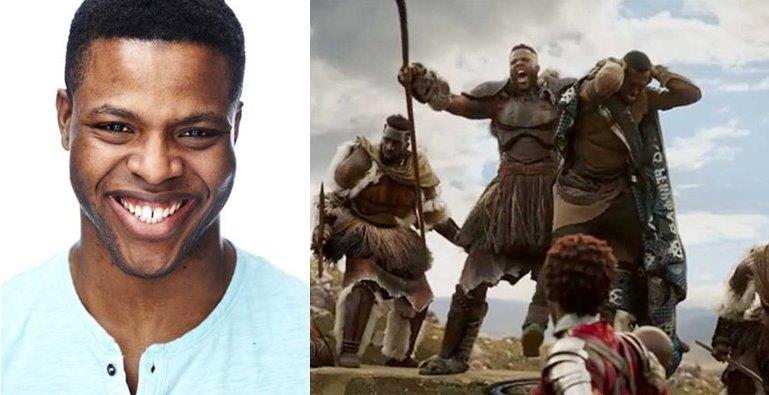 When did you leave Tobago, and what do you remember from your childhood there? I left Tobago when I was about 10 years old. My memories of Tobago are of running up and down on the beach, exploring my neighborhood with friends, and a strong community of family. Family that always cooked and laughed together, family that supported each other and came over any day they chose to. I remember freshly baked bread and sweet bread which my cousin, who lived about 10 miles [and] four villages away, would make and have her teenage son deliver to us via bicycle. I really remember routine, and being part of something and somewhere — knowing that I belonged. Something in particular which is etched in my memory is my village’s annual Harvest Festival (an almost weekly staple of Tobago life). There was nothing, and has been nothing in my life ever since, that compared to that kind of familial and community interaction… My entire village cooking and opening their homes for others — including complete strangers — to freely eat, drink, dance and converse. This allowed everyone to get to know each other better, and share both the celebration and the struggle of island life. Where did your family relocate to in the US, and what was that transition like for you? I moved to Brooklyn, New York and the transition for me was incredibly hard. It was a huge culture shock. I came from an extended family in Tobago (my maternal grandmother bore 12 children), that easily spans at least 250 people… so emigrating to a place where it’s just your mother and sister and little to no support systems was hard. In an environment that is foreign in culture, mindset and development — it was hard to acclimate. I think I retreated deeply within myself. Brooklyn wasn’t a safe space for me. I remember our first year living at our new studio apartment, it was broken into and all we had was stolen. I often wanted us to come back home but I also knew it just was not the plan. The plan was to build… to achieve … to gain something different and valuable. How often do you get back to T&T?I try to return at least once a year. Most recently I was there, briefly, in the days before Carnival 2017, but then had to rush back to set to complete shooting for Black Panther. How have you managed to stay grounded over the years, and what continues to motivate you? I try to get back to T&T at least once a year. It never works out perfectly to be there for Carnival but I try every year. I fail because Carnival usually falls [during] some of the busiest times of year for me. That said, I love coming home. It charges me up and reminds me of what my life is about. What I love about my Trinbago “homeness” is that there are still a lot of things in process. Homes get built by people with their bare hands, with their blocks and cement and PVC pipes and things aren’t finished and it always feels like me. I’m in process … I’m unfinished. I always will feel like I’m in development and that’s just a great mind space to find oneself in. Film, and my current life, are all about the product and the end result but to me, it’s the story in the process that makes everything worthwhile. The process of development leads to the product. So my focus tends to stay there, and coming home always reminds me of that! Simply put, coming home keeps me grounded. What made you want to become an actor, and when was that? I wanted to become an actor because I love stories and I wanted to be a part of the telling of great stories to as many people as I could. Thus, my going in to film and television. In terms of process, I defined my life’s mission and figured out early on that I wanted to be a part of stories which shed light on the lives of people not often given the opportunity to tell their side of the story … you know, stories that reflect the lives of people who don’t always get to have a voice. My love for storytelling started back home in Tobago! I would listen to the older people in my village tell folklore stories about a gold-toothed donkey that they believe was a person who could shape-shift…or of the Douens which were supposedly the souls of children who died before they were christened … or of this old man (Papa Bois) who lived in the forest and would protect it from hunters … All of these extemporaneous stories would serve to both scare the crap out of me and also send my imagination running wild! Funnily enough, despite the fear that [the stories] instilled, I would always ask them to be told to me every time older family and friends dropped by our house or restaurant … And let me tell you, they loved telling me those stories as well. This I think created my love for the genre of magical realism to this day …a genre I wish to explore further in my artistic future. What was it like filming the Marvel films — and to land the role? Landing the role of M’Baku in Black Panther was incredible for me! I just wanted to get in the room. I told my representation to just get me an audition and I’ll do the rest. I loved Ryan Coogler’s work … I remember being incredibly moved by Fruitvale Station and knowing one day that’s the kind of storyteller I want to work with. One with a clear and distinct voice. What was it like for this to be your first film? Being on the Black Panther set was something that I never experienced before. Working with my own personal heroes in that superhero setting was something poetically epic for me. To be able to meet and work alongside Angela Bassett, Forest Whittaker, Martin Freeman and Chadwick Boseman, to name a few of this incredible ensemble, and not end up feeling out of place was something I had ever only dreamed of before this movie. Also, the knowledge that I was part of something that would allow people of colour all over the world to see themselves represented was incredibly surreal. What helped me to stay grounded was a keen and detailed attention to storytelling. I was careful to constantly check in with who M’Baku was, what his attachments are and what do I wanted the world to see when they meet this man? I wanted viewers to see a strong and impassioned leader willing to do whatever he has to for the betterment of his people. Additionally, seeing all the extras that were used to make Wakanda come to life was something magical. I remember thinking: “wow, this doesn’t happen every day…this is big! Ok … back to work”! Also, it was during our costume screen — before any shooting had taken place — and I was standing next to Chadwick Boseman, Micheal B Jordan and Daniel Kaluuya … and it all clicked … “I’m in this … this is huge …” It’s a very charged environment at the moment — in Hollywood, in the US, and internationally. Does this have any impact on your work, your journey? Are you seeing any positive changes in terms of the art that people are producing, or how people are approaching their work? The climate of Hollywood certainly does have an impact on my journey. Hollywood is going through a period where a lot of people are advocating for inclusion and representation and I think that directly correlates to the opportunities I am getting. Also people are crying out for transparency, equality, and equity so it’s a space that will and is empowering artists such as myself who, perhaps, do not fit some of the previously held notions of leading male or leading female actor. New stories — which depict or are influenced by a spectrum of experiences of people of the African diaspora — have certainly created spaces for people like me to tell stories in which I can feel I have personal investment… stories which were not given the time and attention before. I am 6’5”, 230lbs and I think now is the time when the possibilities are higher for me to play people with depth… not just goons and muscle … but layered and thinking individuals who have complex motivations. Piggy-backing off of that question, and as a Caribbean-born person, what opportunities do you think there are for Caribbean actors and filmmakers in the current landscape? I believe it creates a huge market for strong stories that can come from the Caribbean — our folklore, our knack for great drama and storytelling has its place now! We just have to create the narrative. It’s not like it hasn’t been done before … just think Euzhan Palcy, Sydney Poitier as zenith examples! We have beautiful sub-cultures which can and should be explored! Our relationship to the sea and our fishermen; our mixed/blended cultures and the trials that come with that; our richly mixed and painful history of rebellion, revolution and discovery… all of these stories are present in our Caribbean culture and I would say the time is now. The world is “smaller” due to the internet and social media. People are craving their reflection … Where would you like your career to go? (Writing? Directing? Producing?) I would like my career to go into writing and producing stories about the immigrant experience. I love stories about the outsider who, through sheer will, creates their own path! I would love to explore more magical realism, and follow my personal mission of depicting people who usually don’t get seen or given the opportunity to be visible. I want to make the invisible visible! More immediately — what’s next for you as far as projects (ones coming out soon, and/or that you’re filming/prepping)? I’m not yet able to say what’s next for me … But I can assure you to stay tuned! Great things are coming! Anyone you want to give a shout-out to — family, friends, colleagues, etc? I want to say a big shout out to Bunji Garlin and Machel Montano… because I listen to their music almost every day. I listen to their lyrics of artistry, patience, process and integrity. It reminds me that I come from a place with beautiful people who create and know themselves. It makes me further interrogate who I am and why I do what I do. #BussHead And of course, forever peace and love to my mother, sister and extended Caribbean family! Big up! And any parting words of inspiration for Caribbean actors and filmmakers in the region and beyond? Know who you are … have a mission, know why you do it and be specific. Once you master and own this, no one will be able to define who you are outside of your own intentions! |
T&T news blogThe intent of this blog is to bring some news from home and other fun items. If you enjoy what you read, please leave us a comment.. Archives
May 2025
Categories
All
|

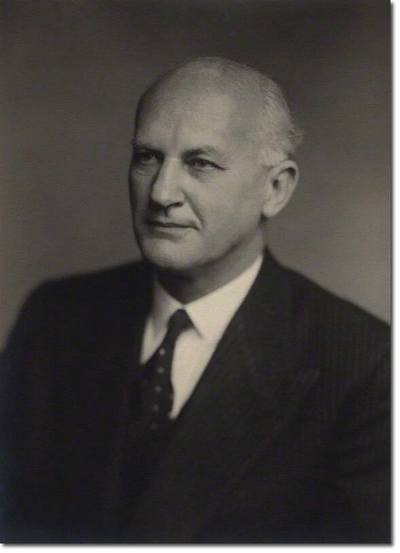
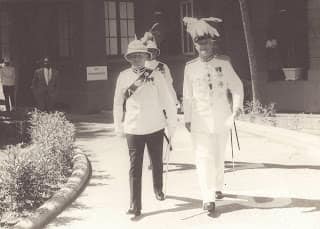

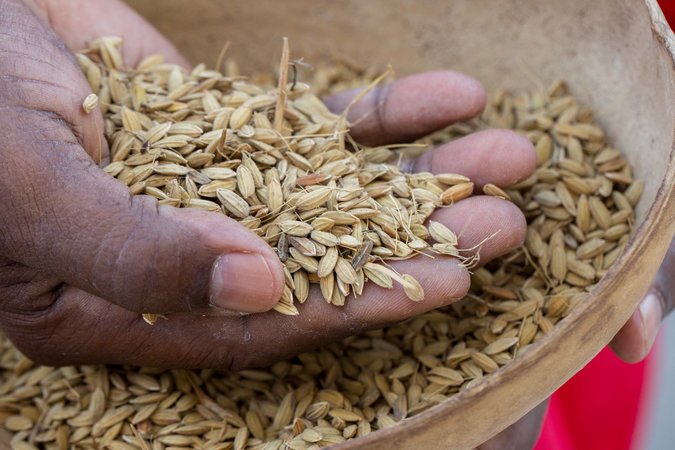



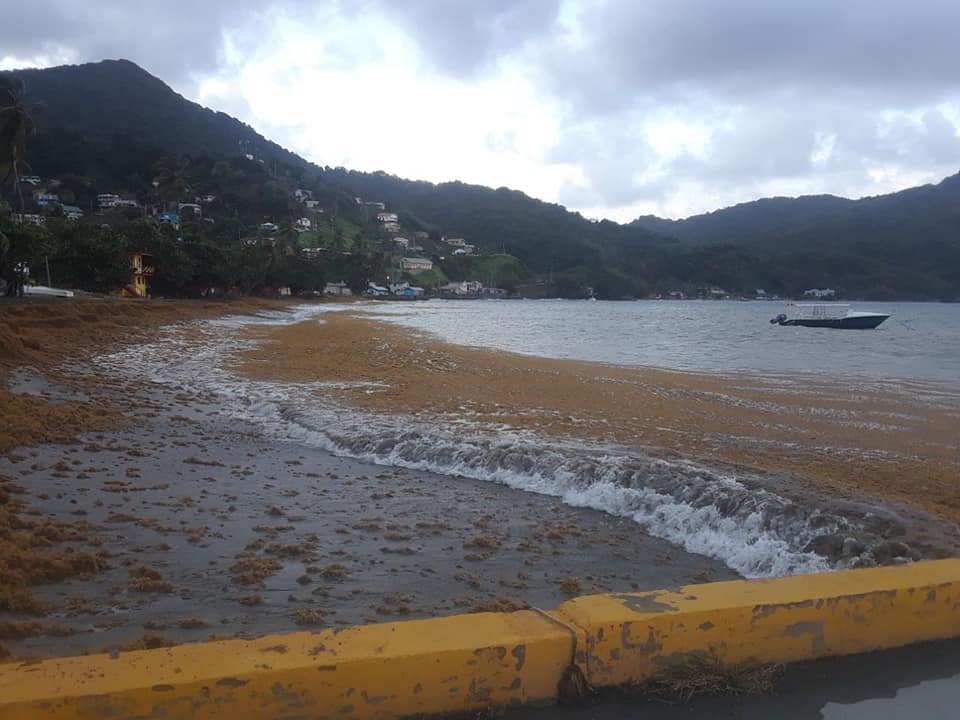
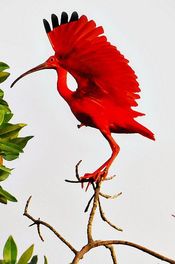
 RSS Feed
RSS Feed